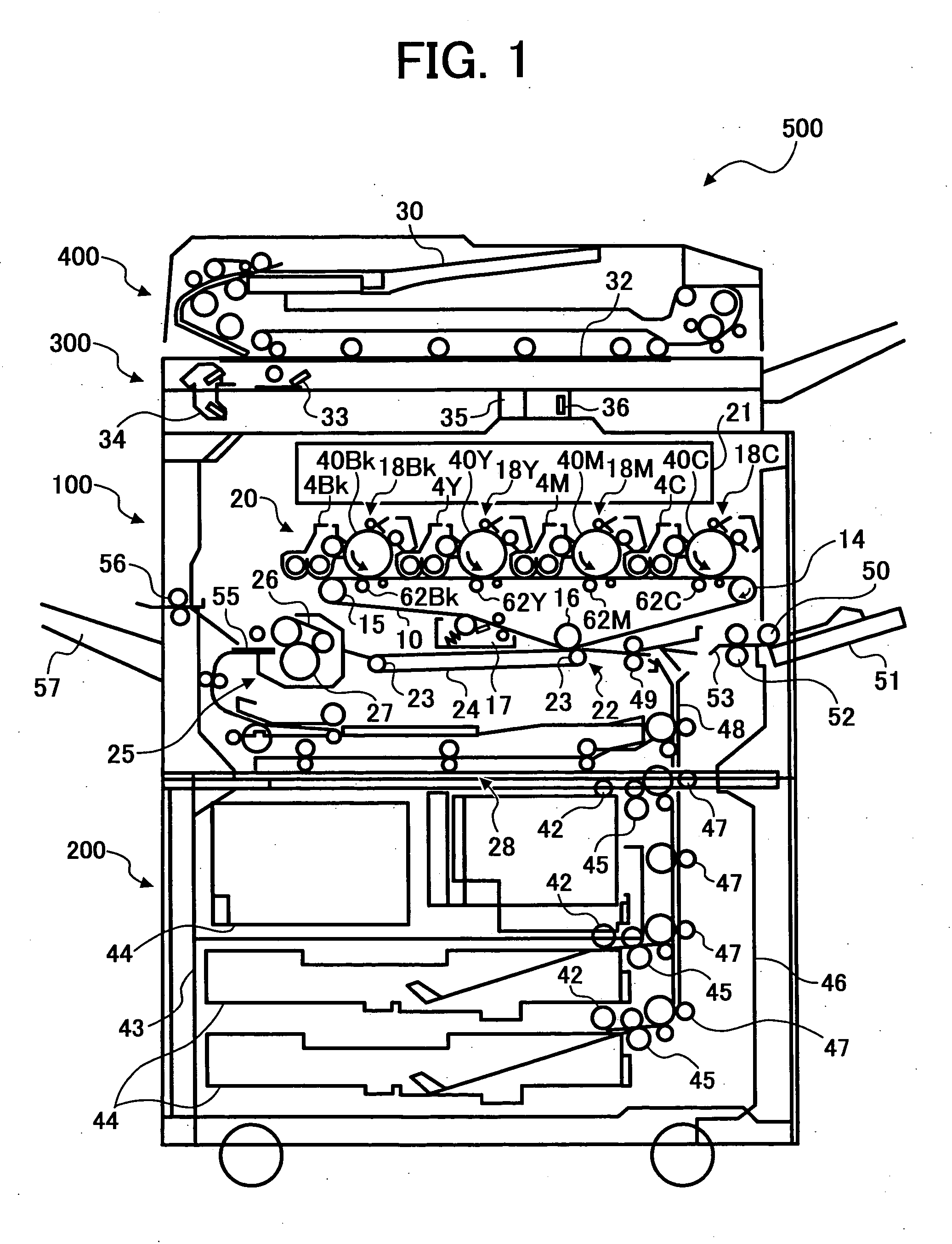Developer, and image forming apparatus and process cartridge using the developer
a technology of developer and process cartridge, which is applied in the field ofdevelopers, can solve the problems of deterioration of the fluidity of the toner, poor fluidity properties of the toner only including the binder resin and the colorant, and the inability to fix and develop, so as to achieve stable production and high quality of images
- Summary
- Abstract
- Description
- Claims
- Application Information
AI Technical Summary
Benefits of technology
Problems solved by technology
Method used
Image
Examples
example 1
Carrier Manufacturing Example 1
[0288] The following components were mixed for 10 minutes using a mixer TK HOMOMIXER to prepare a coating liquid (1).
Silicone resin solution132.2parts(SR2410 from Dow Corning Toray Silicone Co., Ltd.,solid content of 23% by weight)Aminosilane0.66parts(SH6020 from Dow Corning Toray Silicone Co., Ltd.,solid content of 100% by weight)Particulate conductive material31parts(substrate: alumina, inner cover layer: tin dioxide,outer cover layer: indium oxide including tin dioxide,particle diameter: 0.35 μm, resistivity: 3.5 Ω· cm)Toluene300parts
[0289] The coating liquid (1) was coated on a calcined ferrite having the volume average particle diameter of 35 μm to form a cover layer having the thickness of 0.15 μm thereon, using SPIRA COTA® (from Okada Seiko Co., Ltd.) at an inner temperature of 40° C. and then dried.
[0290] The thus coated ferrite was calcined in an electric furnace for 1 hour at 300° C., followed by cooling down. The coated ferrite was sieved...
example 3
[0327] The procedure for preparation of the toner (2) in Example 2 was repeated except that the amount of the hydrophobized titanium oxide is changed from 1.6 parts to 1.4 parts.
[0328] Thus, a toner (3) was prepared.
[0329] The toner (3) was mixed with the carrier (1) and evaluated by the same method as Example 1.
example 4
[0330] The procedure for preparation of the toner (3) in Example 3 was repeated except that the mixing conditions with the external additives were changed to as follows.
[0331] At first, 100 parts of the mother toner particles were mixed with 1.6 parts of the hydrophobized titanium oxide (from Tayca Corporation) by a mixer. The mixing conditions were as follows:
[0332] Revolution: 1000 rpm
[0333] Mixing operation: cycle of mixing for 2 min followed by pause for 60 sec was repeated 3 times
[0334] Next, the mixture was mixed with 0.15 parts of the zinc stearate (from Sakai Chemical Industry Co., Ltd.) and 1 part of the hydrophobized silica (from Clariant (Japan) K. K.) by a mixer. The mixing conditions were as follows:
[0335] Revolution: 1000 rpm
[0336] Mixing operation: mixing for 2 min
[0337] Thus, a toner (4) was prepared.
[0338] The toner (4) was mixed with the carrier (1) and evaluated by the same method as Example 1.
[0339] The properties of each of the prepared developers are s...
PUM
 Login to view more
Login to view more Abstract
Description
Claims
Application Information
 Login to view more
Login to view more - R&D Engineer
- R&D Manager
- IP Professional
- Industry Leading Data Capabilities
- Powerful AI technology
- Patent DNA Extraction
Browse by: Latest US Patents, China's latest patents, Technical Efficacy Thesaurus, Application Domain, Technology Topic.
© 2024 PatSnap. All rights reserved.Legal|Privacy policy|Modern Slavery Act Transparency Statement|Sitemap


